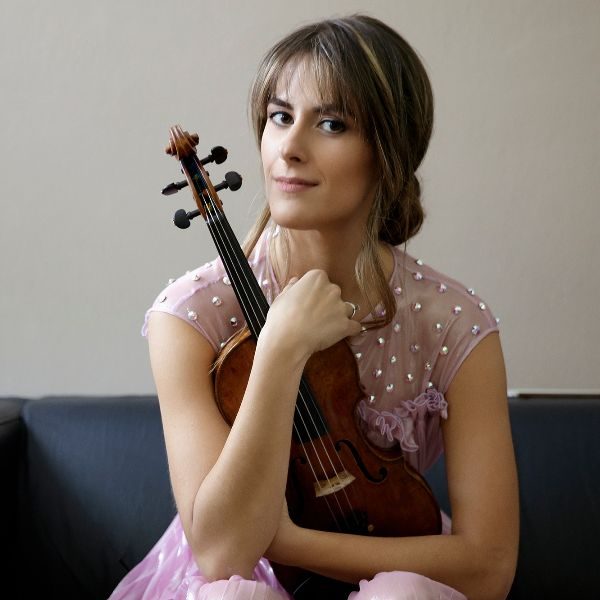Violinist Dego makes notable Dallas Symphony debut with Beethoven

The Dallas Symphony Orchestra conducted by Fabio Luisi hosted violinist Francesca Dego in her local debut, performing Beethoven’s Violin Concerto in D Major, Op. 61. Dego has performed with renowned orchestras worldwide, including a recent appearance with the NHK Symphony Orchestra under the baton of Luisi. Her discography includes violin concertos by Mozart, Brahms and Busoni along with chamber music and solo repertory.
Both of the evening’s selections were characterized throughout by balanced, symmetrical gestures undergirding familiar yet flexible forms, all of which are endemic to the Viennese Classical Style epitomized by Beethoven and Mozart
The concerto comprised the first half of the program, beginning with soft timpani strikes that initiated the exposition of the first movement. Many themes throughout the concerto feature abrupt dynamic changes, a common trait of Beethoven’s music generally; Luisi navigated the orchestra’s rendition of these with the right amounts of drama and decorum. Dego joined the orchestra for the second exposition after a brief solo passage.
The concerto cast the orchestra and soloist as close collaborators rather than opposing forces; when the orchestra wasn’t accompanying the Dego’s embellished statements of the movement’s themes, her parts seemed overlaid onto the ensemble’s introduction of new themes.
The content of the soloist’s part seemed ideal for collaboration of this sort. Although technically demanding, Dego’s lines tended to be more melodic, embellished by arpeggios and occasional rapid scalar passages, than overtly flashy. The exceptions to this were the cadenzas in the two outer movements, which did include more dazzling figuration such as faster rhythms and arpeggios involving multiple stops.
The slow second movement consisted of variations on a lyrical theme introduced by the orchestra, with each marked by different instrumental combinations accompanying varied figurations by the soloist. The movement’s theme incorporated brief but loud interjections not unlike those of the first movement, all of which were tempered by Luisi’s direction.
A brief solo passage from the soloist led directly into the cheerful finale, a scherzo-like movement with a galloping rhythm and melodic interjections from the horns suggestive of fox hunts or other outdoor pursuits. The soloist captured this mood perfectly, multiple stops that took in the thematic character of the movement overall as well as providing a connection to the spirited cadenza.
Dego responded to the audience’s enthusiastic applause with the dazzling and fiery Capriccio No. 16 by Nicolo Paganini for an encore.
The second half of the program consisted of Mozart’s Symphony No. 41, dubbed the “Jupiter” Symphony owing to its contrapuntal finale and festive character overall.
Contrasting dynamics within the themes of this symphony, similar to those heard in the Beethoven concerto, contribute to its festive character. In the first movement, Luisi chose to emphasize the quieter portions of the opening theme, which resulted in slight but noticeable fluctuations to the movement’s tempo; these disappeared once the movement began in earnest. Dynamic contrasts between the themes themselves were handled expertly, however, and helped to maintain the movement’s forward momentum. Luisi and the DSO carried this thematic clarity into the contrasting and lyrical slow movement that followed.
Luisi took the third movement – minuet and trio – at a measured pace that seemed to enhance the stately formality of the dance. The rhythms in each section were very precise, and well-executed.
The finale seemed especially brisk, a daring choice considering the complexity of the movement with its diverse and distinct themes (five of them) and their intricate contrapuntal combinations.
The DSO and Luisi met the challenge handily, maintaining the clarity and distinction of each successive theme as these were added to the growing sonic kaleidoscope and culminating in the coda, during which all of the themes introduced over the course of the movement were sounded together in a contrapuntal tour de force, bringing a resounding conclusion to the jovial symphony and to the evening’s program.
The program will be repeated 7:30 p.m. Saturday and 3 p.m. Sunday. dallassymphony.org
